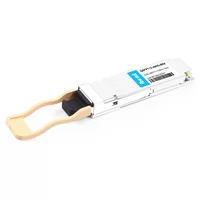The competition within the field of connective industries keeps extending as technology develops, thus creating the demand for faster data transfer mechanisms. Out of these mechanisms, the 400G SR4 compatible QSFP112 transceiver, the Mellanox MMA1Z00-NS400 compatible, suggests significant progress in the area of network connection. This transceiver is designed to withstand the harsh requirements of data centers, telecommunication, and enterprise networks, ensuring an optimum balance of high performance and dependability. In this piece of writing, we are focusing on the technical details, compatibility issues, and performance metrics of Mellanox MMA1Z00-NS400, in particular for those who wish to improve their network performance in the competitive edge.
What is the mma1z00-ns400 qsfp112 transceiver?
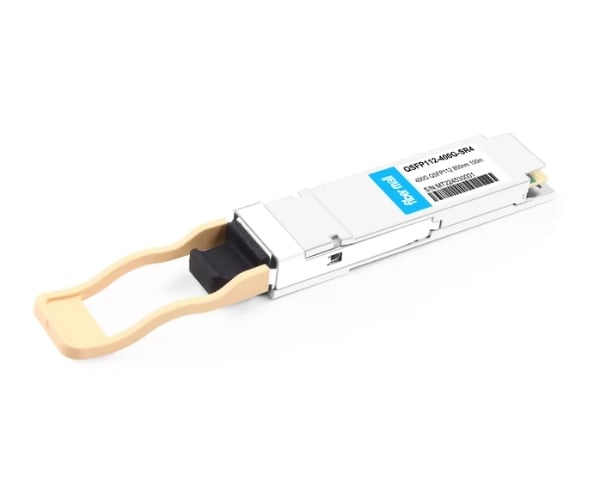
The MMA1Z00-NS400 QSFP112 transceiver aims for high-speed optical transmission speeds of up to 400 Gbps. This is accomplished through the support of the 400GBASE-SR4 standard, which means it can provide short-distance multi-lane fiber connections for use within dense data centers. This transceiver uses an MPO-12 connector and operates over multimode fiber with an up to 100m reach on OM4 fiber. The requirements of the QSFP112 MSA and IEEE 802.3bs standards are all met without compromise, allowing the unit to be easily integrated into established networks. The diagnostic module of the device also supports advanced digital diagnostics, which enables effective performance measurement in real time, making the device more reliable to use.
Understanding 400g and optical transceiver capabilities
The objective of this paper relates to the current state of fiber-optic network technology and its upgrading perspectives as growing 400G technology, which is the subject of the article. It will be interesting to note that this new technology has the advantage of increasing its optical capacity four times in relation to the previous 100G technology. Optical devices included transceivers such as MMA1Z00-NS400, which made speedy and reliable data transmission possible by changing electric signals into optical, hence allowing speedy communication over the fibre optics. Such transceivers are designed to enhance the performance of the systems by means of features like multi-lane data paths and advanced diagnostics features, which ensure the network’s functionality is smooth.
The role of qsfp112 in mma1z00-ns400
The electronic capabilities of the MMA1Z00-NS400, as well as its ability to fit into higher-level networks, would be based on the Usage of the Form Factor of Dual Quad Small Form-factor Pluggable 112. Firstly, such a module would allow for putting this module in the current network system that uses QFSP112 to support high-speed and efficiency requirements. The total data rate of 400G is very much needed in large data centers and telecommunications networks. This is possible as QSFP112 allows up to 100G links times four at the most.
The QSFP112 standard defines several features, such as greater port density configuration, lower power requirements, and greater signaling rates, which all result in reduced cost levels and deployment flexibility. In addition, the fact that this standard has backward compatibility with older generations of the QSFP ensures that sites with older infrastructure do not need to change everything when moving to the new technology. With the MMA1Z00-NS400 transceiver, it’s possible to meet performance demand by integrating QSFP112 into the design, which in turn yields high-speed connectivity.
Applications of sr4 transceiver in data centers
Synchronized communication system interoperability (SR4)—aimed at low-cost high-speed transmission within a data center—revitalizes data networks. Integrating four parallel optical transmission links per transceiver for better performance across clusters and racks, the SR4 transceiver is suited for environments where compactness is needed with room to support large amount of data and minimal wait time. Since SR4 transceivers make use of multimode fiber (MMF), operational costs and installation costs are greatly reduced, meaning the data centers can expand without sacrificing the level of performance achieved. The final characteristic that is worth noting is their ability to use less power compared to long reach solutions that are more common, which helps conserve energy while improving sustainability.
How does mma1z00-ns400 achieve 400g data rates?
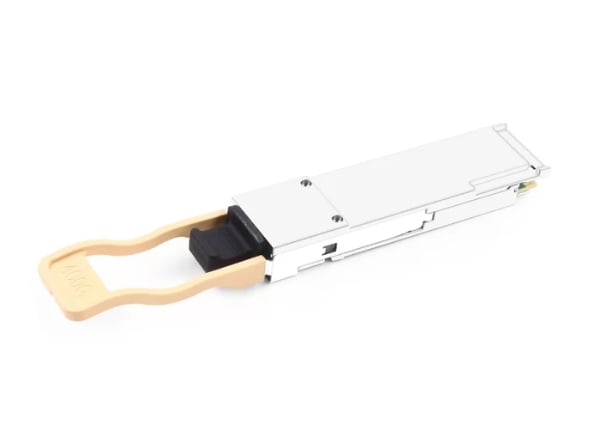
The technology behind qsfp112 and pam4
The increased use of PAM4 (Pulse Amplitude Modulation) as the most important method of transmission modulation is the primary reason why the QSFP112 technology is able to achieve 400G transmission rates. PAM4 enhances spectral efficiency by encoding two bits per symbol, effectively doubling the data rate compared to NRZ (Non-Return to Zero) modulation while maintaining the same bandwidth. Four signal levels are used in each individual transmission channel, which lowers the frequency utilized per channel. By incorporating PAM4 with QSFP112, the MMA1Z00-NS400 transceiver can support higher data throughput making it efficient to meet the needs of modern data infrastructures.
Utilizing 850nm for enhanced performance
The adoption of the wavelength of 850nm in optical transceivers such as MMA1Z00-NS400 is indeed purposeful to improve on performance in situations of high data transmission speed over short distances, particularly in short-reach applications. It can be argued that the 850nm wavelength’s preference stems from its ability to work with multimode fiber that is commonly in data centers because of its price and versatility.
Multimode fiber that is designed for 850nm supports a reasonable bandwidth of up to 100 meters, stranding it as ideal for intra-data center connections. Due to this low wavelength, one can use cheap and small optical components, therefore causing the transceiver’s cost and the size to also be small. The data that is carried on through the 850nm wavelength also suffers less attenuation and loss of signal strength under the operating range, thereby ensuring that the performance is credible and that the signal is not interfered with.
Further, it is now possible to increase intermodal bandwidth with 850nm based solutions thanks to the improvement made on the lasers and fiber technology, thus higher data rates could be achieved without an increased use of optical power. The usage of the wavelength of 850nm is significant to the benefits of the MMA1Z00-NS400 since it also addresses the increasing bandwidth requirements brought about by the rapid developments of the network infrastructures in modern society with respect to cost and energy efficiency.
The importance of 50m mmf in maximizing reach
The application of 50-micron multimode fiber (50um MMF) is central in extending the range for short to medium data transmission, especially in data centers. This fiber is said to be optimized for use to its full capabilities at 850nm wavelength which improves the data rate. As per the latest data, 50um MMF is effective in transmitting data up to 25 Gbps per channel, which allows the implementation of applications like 100G Ethernet when joined into four links.
The gradual introduction of OM4/OM5 grades of 50um has quite improved the modal bandwidth to about 4700 MHz*k m, which means it can improve the range without using more power. One of the benefits of utilizing 50um MMF is that due to the thicker core when compared to a single mode, there is the possibility of various means of transmission which improves bandwidth capacity while reducing modal dispersion.
50 um MMF is now capable of supporting longer reach High Speed Serial links of 40G and above, distances of up to 300 meters thanks to the advances in VCSEL technology. Through incorporating better design and add-on processing techniques, 50um MMF is increasingly becoming a cheaper and high efficiency solution to the presented power challenges in networking today giving a timely response to bandwidth needs.
Is the mma1z00-ns400 transceiver compatible with other devices?
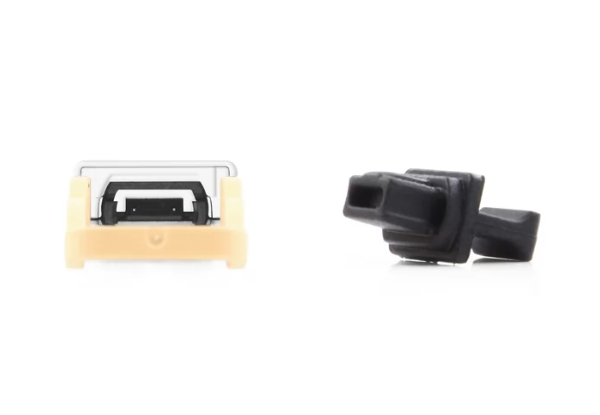
Exploring the mma1z00-ns400 compatible device list
Models MMA1Z00-NS400 can work with many devices in the data and telecommunications systems. It can be perfectly integrated into networks that include switches, routers, and storage systems that support an interface of 40G QSFP+. Furthermore, the said transceiver is also compatible with systems that have OM3/OM4 multimode fiber connectors, thus enabling effective high-speed network. It is also essential to install the MMA1Z00-NS400 with devices that are within IEEE standards for effective performance.
Interoperability with different fiber cable types
The MMA1Z00-NS400 is a transceiver that ensures maximum interoperability across all types of fiber cables, particularly OM3 and OM4 multimode fibers. An OM3 fiber has a modal bandwidth of 2000 MHzkm at 850 nm and supports distances of up to 100 meters of high-speed transmission of distances that are less than or equal to 100 meters, especially in the case of set-up configurations. On the other hand, OM4 has a bandwidth of 4700 MHz/km, as earlier described, allowing a distance of 150 meters at 850 nm. This not only enhances efficiency but also future-proofs the increasing network expansion’s performance. The transceiver’s ability to work with large core 50um multimode fibers takes advantage of multiple signal paths, which decreases the signal loss and degradation of the fiber between distances. From the performance metrics, it is also apparent that the network operators need to use and follow the recommended practices in their service provision by ensuring the fiber patching standards are complied with to avoid excessive connection loss, as well as ensuring that the use of the connectors maintains signal insertion loss to the least possible levels. Hence, following these specifications, MMA1Z00-NS400 is capable of operating effectively in different network cabling systems by meeting the requirements of a modern data center.
OEM vs mma1z00-ns400 compatible 400g sr4 qsfp112 pam4 devices
The main technical differences when evaluating MMA1Z00-NS400 INFINITE advanced multi-core technology Optical Interconnect with that of other brands 400G SR4 QSFP112 PAM4 devices arise when network features, cost, and performance are considered. Integration within OEM environments is custom-designed, which means recovery services are available at additional costs, but performance norms will certainly be met. This does, in some cases, restrict overall engagement with other systems given that these systems are designed to operate in a closed environment, hence performing a particular task.
On the other hand, MMA1Z00-NS400 devices are a cheaper substitute while still being in the range of usage of many OEM specifications. Each optical lane can transmit two data channels at once, enabling greater bandwidth use. PAM4 modulation is necessary for this. This is exactly what is needed for the subsequent generation of high-speed networks. The effectiveness of the MMA1Z00-NS400 is adaptable, permitting deployment over various network structures at similar distances to that of common OEM devices. Recent evidence also confirms this case to be a compelling argument due to their relatively lower running costs which is embedded in their low power ratings. In the same way as these earlier versions, the MMA1Z00-NS400 compatible variants are intended for data centers and can deploy easily within other domains.
What are the key features of the Mellanox MMA1Z00-NS400 QSFP112?
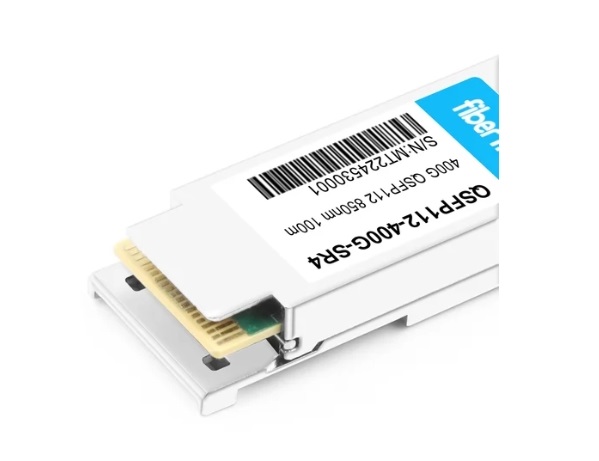
Benefits of dom in qsfp112 transceiver
DOM (Digital Optical Monitoring) in the case of QSFP112 transceivers has many associated benefits that contribute to the better working and maintenance cost by its effective use. With DOM, such attributes as optical output power, input power, temperature, laser bias current, and the transceiver supply voltage can be accurately monitored and accessed in real-time. This feature assists in the maintenance of the system as it could help to reduce the chances of interference with the network by resolving issues beforehand. In addition, logging of performance data at regular intervals offers the opportunity for trend analysis which in turn enables scheduled maintenance practices. Moreover, QSFP112 transceivers with DOM seem to be a potent integration with the latest trends as they are supposed to be dependable and resilient in extended and robust network systems.
Comparing the sr4 transceiver with other options
Taking SR4 Transceivers into account vis-a-vis the competition, it is prudent to examine their physical attributes, certain benchmarks and application areas. Following is a detailed comparison comparison which brings forth some of the considerations.
Data Rate and Distance:
- SR4 Transceiver: In this SR4 transceiver, transmission distance reaches up to 100 meters on an OM3 multimode fiber and data rates are typically in the order of 40 Gbps.
- LR4 Transceiver: In this case, Single-mode fiber LR4 Transceiver facilitates data transmission of about 40 Gbps over substantial distances which is about 10 kilometers in this case.
- CWDM4 Transceiver: This type is capable of reaching data rates of as high as 100gbps and can transmit over a distance of two kilometers on single mode fiber bandwidth.
Wavelength and Mode:
- SR4 utilizes the parallel transmission of multiple multimode fibers at a length of around 850nm.
- The four CWDM channels with unique wavelengths on single-mode fiber in this transmission enhance speed.
- This is a long-range multi-fiber single-mode wavelength application benefiting long-distance transmission through coarse multiplexing division.
Power Consumption And Efficiency:
- Due to the short range connection, the SR4 transceivers are noted to be the least power hungry transceiver varieties.
- Due to the complex laser technologies used, LR4 transceivers require relatively more transmission power owing to increased distance.
- This transceiver type supports moderately ranged applications with high data rates requiring a significant energy efficiency rate.
Cost Considerations:
- For short distance high-density data center applications, SR4 is the most effective regarding costs incurred.
- Increased technology integration, which is needed for extended reach and single-mode fiber compatibility, causes LR4 to have a higher initial cost.
- Where distance is not the primary concern and level of scalability is required, CWDM4 provides both cost and performance balance, which is ideal for the said applications.
To sum up, when comparing transmission options, such as SR4, LR4, and CWDM4, the differences would be determined mostly by the requirements of the network with respect to the distance, types of infrastructure, and the funding. Each type of transceiver offers particular benefits designed for particular transceiver use-cases, hence understanding these parameters would be important for proper decision making.
Advanced features in optics and connection compatibility
The improvement of optical transceiver technologies has been crucial for the increase of the data transfer rate and speed. One of the cutting-edge functionalities incorporates silicon photonics, which offers additional scaling down and energy efficiency that reduces the cost per bit and the thermal management. This is a very promising technology for optical links where high-density and high-speed data transfer is a necessity across the data centers.
Support for connection has also evolved with the advancement in digital coherent optics (DCO), which permits greater bit rates over longer distances without the need for substantial changes in the structures. As an example, the integration of 400G ZR optics allows cross-vendor interoperability of different platforms which reduces the need of putting in extra hardware.
The latest developments by industry pioneers such as Google suggest moving toward AI-enhanced applications to control networks to efficiently utilize these optic characteristics, which improve the redundancy and efficiency of their global network. Recent surveys indicate that they provide a considerable increase in throughput and reliability of the interconnections and networks, which will have effects on the design in the presence of future needs. This combination of improved optics and better-supported connections allows companies to adjust to changing data requirements quickly and accurately.
How do you implement the mma1z00-ns400 in your network?
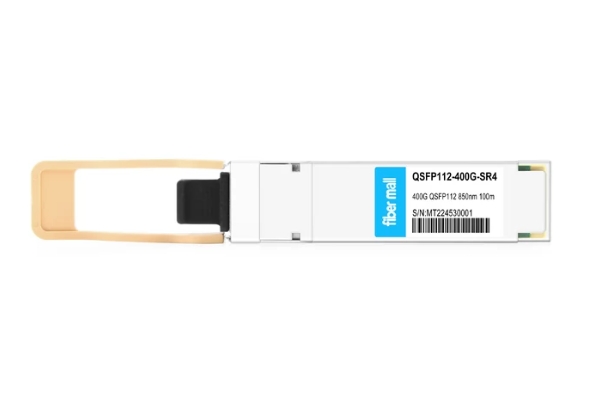
Installation tips for single-port transceivers
Ensure Compatibility: The first thing you should do is to check if the transceiver you intend to purchase works with your particular network devices. Match the specs of your devices with those specified in the user’s manual.
- Handle with Care: When deploying transceivers, make it a habit to observe ESD protection. Do not touch the underside where the electrical contacts are.
- Insertion Guidelines: Orientation of the transceiver with the port opening should be done, and firm pressure should be applied until a click is heard. Never insert the transceiver forcibly as this may lead to damage.
- Network Configuration: Enter all network information through management software. For optimal service, always refer to Google’s most recent protocol structures.
- Testing: After installation, perform diagnostic tests to determine if there is correct functioning of the system. Check performance indicators to confirm the effectiveness of the installed transceiver.
- Update Firmware: Try to find the newest firmware updates from Google as this will enhance the efficiency of the AI systems of management and security in use by your transceivers.
When these procedures are observed, one will be able to enhance the performance and durability of single-port transceivers while adopting the latest breakthroughs in network technologies.
Ensuring firmware compliance for mma1z00-ns400 compatible integration
For the integration of MMA1Z00-NS400 compatibility to comply with firmware requirements, the very first task is to check the manufacturer’s website for new firmware updates on a regular basis. Network structure, just like any other systems and infrastructures, have their own security and compatibility and require regular updates. Upload such tools or notifications that will allow you to perform updates with minimal delay. Also, after the update transmission, a firmware spread control through checksum verification or other control methods would be performed to confirm that the updates were delivered in a state that was not corrupted. When enterprises have many sites, it would help to have a common administrator to manage the updating of firmware versions on many devices. Not only does this save time and resources, but it also assists with compliance in regard to procedures and standards that the industry needs.
Choosing the right fiber patch cables and splitter
The performance and reliability of a network depend on the type of selected fiber patch cables and splitters. First and foremost, possess the knowledge on the required optical fiber type single mode (SMF) or multi-mode (MMF). In most cases, SMF cables are used for long-distance connections and are capable of supporting higher bandwidth whereas MMF cables are used for local area networks that do not require long distance connections.
When selecting an appropriate splitter, it is important to note the split ratio which is defined as the portion of signal strength that is viewed from the output fibers. However, with a lower split ratio, every port retains a larger signal strength, but fewer endpoints are supported. As per a more recent report from Google, developments in splitter technology have complacently changed things, making it possible to have greater data throughput at minimal loss, which is important in high-density network environments.
Additionally, both cables and splitters need to comply with industry norms that include IEC 61754 and TIA/EIA-568. This is done to ensure optimal performance and compatibility. Additionally, building components that meet these criteria helps in lowering latency and minimizing signal degradation. Recent data from studies have indicated that the incorporation of laser-optimized cables and high-performing splitters can help enhance transmission efficiency by a staggering thirty percent, which is critical for the adoption of cloud applications. These considerations will accordingly assure that your fiber optic infrastructure is able to withstand challenges head-on as well as remain cost-effective and efficient.
Reference Sources
Frequently Asked Questions (FAQs)
Q: What is the purpose of the Mellanox MMA1Z00-NS400 Compatible 400G SR4 QSFP112 Transceiver?
A: The Mellanox MMA1Z00-NS400 Compatible 400G SR4 QSFP112 Transceiver is a small optical transceiver suitable for 400G SR4 interconnect and has applications in data centers and High-Performance Computing (HPC) systems.
Q: What distinguishes a 400G QSFP112 SR4 transceiver from other transceivers?
A: 400G QSFP112 is relatively new in the industry. QSFP112 SR4 transceiver is isolated for reaches not exceeding 100m with 4 channels and operates on PAM4 modulation on 850nm wave length which is very useful in multi-mode fiber applications and also the top ports are made out of, flat QSFP112 form shape.
Q: Shall I be able to use the Mellanox MMA1Z00-NS400 transceiver within the NVIDIA end to end Infiniband systems?
A: Yes, As guaranteed by the NVIDIA end-to-end Infiniband systems 400GBASE-SR4 QSFP112 transceiver ensures smooth compatibility within the system and delivers high perfomance confirming inter-systems efficiency with the compatible SR4.
Q: What is the maximum distance covered by 400G SR4 QSFP112 PAM4 850nm transceiver?
A: The maximum distance that the 400G SR4 QSFP112 PAM4 850 nm transceiver can deliver over multi-mode fiber is 50 meters, Such distance makes this transceiver usable within datacenters providing short connects.
Q: Are there any specialized connectors built in the 400G transceiver?
A: The 400 G transceiver, including the Mellanox MMA1Z00-NS400 model, usually employs a variety of connector shells, such as APC or UPC, depending on the application requirements. The shell of QSFP112 has a flat top, which facilitates plum connections.
Q: Are MatchX 7 and the ConnectX 7 adapters interoperable with the Mellanox MMA1Z00-NS400?
A: Certainly, the transceiver of connective interfaces TAA-compliant version of 400GBASE-SR4 QSFP112 is supported by the ConnectX 7 adapters as well as the BlueField 3 adapters, which guarantees connection for high data networks.
Q: How is the bandwidth handled with the MMA1Z00-NS400?
A: The MMA1Z00-NS400 transceiver is compatible with Maslow and can handle bandwidth which is dynamic in nature, for instance 200G and beyond by using better modulation and encoding protocol therefore ensuring target applications seamlessly transfer data.
Q: Does the current 400g support active optical and direct attach connectivity?
A: The newly designed John Le Carr version of Madeup named MMA1Z00-NS400 Compatible 400G SR4 QSFP112 clearly states that it supports both direct attach as well as the active SR connectors, hence allowing the building of network infrastructures which are high speed.
Q: What advantages does a 2-channel design offer in a 400g transceiver?
A: In a 400 g transceiver such as MMA1Z00-NS400 which has 2 channels there is effective transmission of data with a reduction in latencies thereby improving performance of data concerned tasks while increasing the throughput of the network.

